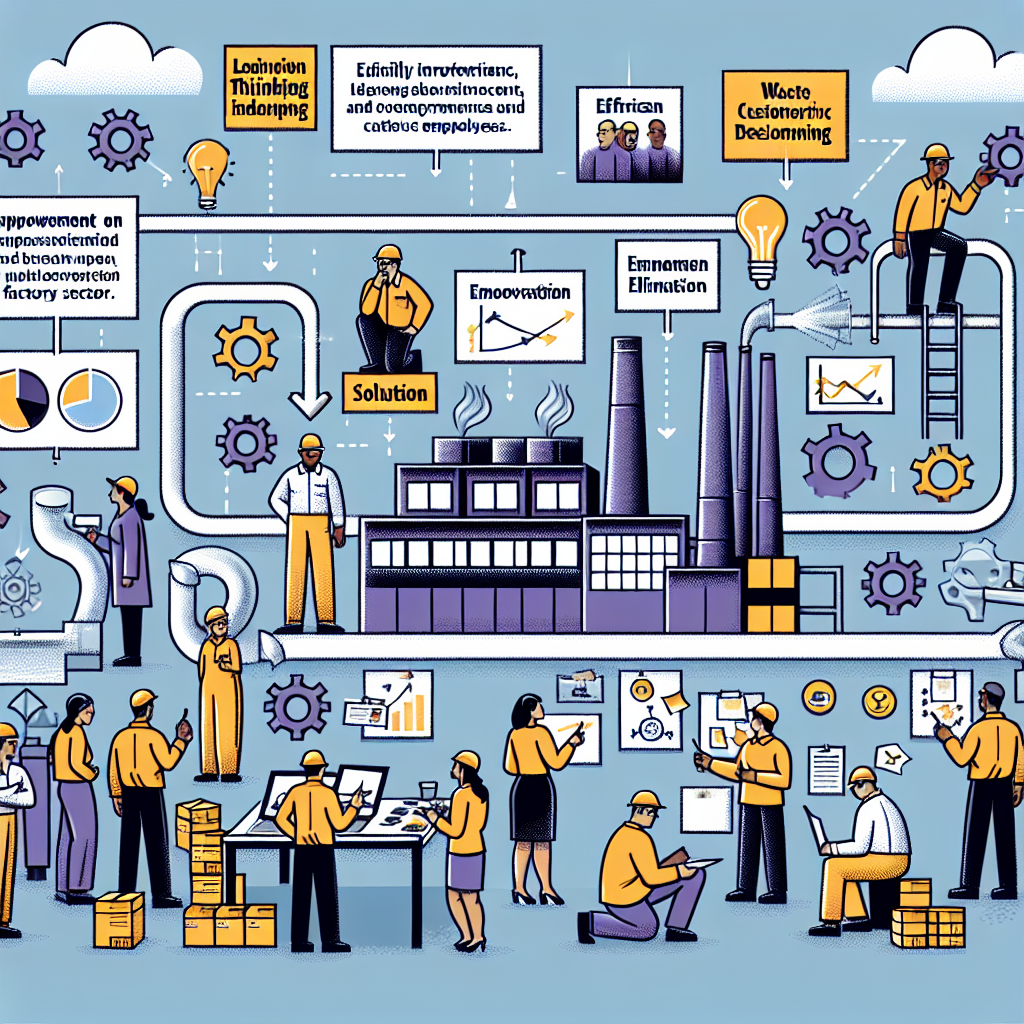-
Table of Contents
- Introduction
- The Principles of Lean Thinking
- 1. Identify Value
- 2. Map the Value Stream
- 3. Create Flow
- 4. Establish Pull
- 5. Seek Perfection
- Application of Lean Thinking in Problem Solving
- 1. Define the Problem
- 2. Analyze the Current State
- 3. Develop Countermeasures
- 4. Implement and Monitor
- 5. Standardize and Sustain
- Conclusion
Introduction

Lean thinking is a management philosophy that originated from the Toyota Production System (TPS) in the 1950s. It focuses on eliminating waste and improving efficiency in all aspects of a business. This approach has gained popularity in various industries around the world, including Indonesia. In this article, we will explore the principles of lean thinking and its application in problem-solving within the industrial sector in Indonesia.
The Principles of Lean Thinking
1. Identify Value
The first principle of lean thinking is to identify value from the customer’s perspective. In the industrial sector, this means understanding what customers truly need and value in a product or service. By focusing on value, companies can prioritize their efforts and resources towards delivering what customers want, while eliminating activities that do not add value.
2. Map the Value Stream
Once value is identified, the next step is to map the value stream. This involves visualizing the entire process from raw materials to the end product or service. By mapping the value stream, companies can identify areas of waste, such as unnecessary steps, delays, or bottlenecks. This allows them to streamline the process and improve efficiency.
3. Create Flow
Creating flow is about ensuring a smooth and uninterrupted flow of work throughout the value stream. This can be achieved by eliminating obstacles and reducing variation in the process. In the industrial sector, this may involve reorganizing workstations, optimizing production schedules, or implementing standardized work procedures. By creating flow, companies can minimize waiting times, reduce lead times, and improve overall productivity.
4. Establish Pull
The principle of establishing pull means producing only what is needed, when it is needed, and in the quantity needed. This is in contrast to traditional mass production, where products are made in large batches based on forecasts or inventory levels. By establishing pull, companies can avoid overproduction, reduce inventory costs, and respond quickly to changes in customer demand.
5. Seek Perfection
The final principle of lean thinking is to continuously seek perfection. This involves a mindset of continuous improvement and a commitment to eliminating waste in all its forms. In the industrial sector, this may include implementing quality control measures, empowering employees to suggest improvements, and fostering a culture of learning and innovation.
Application of Lean Thinking in Problem Solving
Lean thinking provides a structured approach to problem-solving in the industrial sector. By applying the principles of lean thinking, companies can identify and address the root causes of problems, rather than just treating the symptoms. This leads to more sustainable and long-term solutions. Here are some key steps in applying lean thinking to problem-solving:
1. Define the Problem
The first step in problem-solving is to clearly define the problem. This involves understanding the gap between the current state and the desired state, and identifying the specific issues that need to be addressed. By defining the problem, companies can focus their efforts on finding the right solutions.
2. Analyze the Current State
Once the problem is defined, the next step is to analyze the current state. This involves mapping the value stream and identifying areas of waste or inefficiency. By analyzing the current state, companies can gain a deeper understanding of the root causes of the problem and identify opportunities for improvement.
3. Develop Countermeasures
Based on the analysis of the current state, companies can develop countermeasures to address the root causes of the problem. These countermeasures should be focused on eliminating waste, improving efficiency, and delivering value to the customer. It is important to involve employees at all levels in the development of countermeasures to ensure their buy-in and commitment to implementation.
4. Implement and Monitor
Once the countermeasures are developed, they need to be implemented and monitored. This involves making the necessary changes to the process, training employees, and establishing performance metrics to track progress. Regular monitoring and feedback are essential to ensure that the countermeasures are effective and to make any necessary adjustments.
5. Standardize and Sustain
The final step in problem-solving is to standardize the improved process and sustain the gains. This involves documenting the new standard operating procedures, training employees on the new process, and establishing a system for continuous monitoring and improvement. By standardizing and sustaining the improvements, companies can prevent the recurrence of the problem and ensure long-term success.
Conclusion
Lean thinking is a powerful approach to problem-solving in the industrial sector in Indonesia. By applying the principles of lean thinking, companies can eliminate waste, improve efficiency, and deliver value to the customer. The structured problem-solving process of lean thinking helps companies identify and address the root causes of problems, leading to more sustainable and long-term solutions. By embracing lean thinking, Indonesian industries can enhance their competitiveness and contribute to the overall growth and development of the country’s economy.
